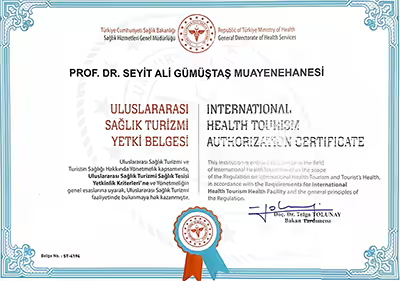LEIOMYOSARCOMA
- Hits: 662
Leiomyosarcoma is a rare high-grade malignant soft tissue tumor of smooth muscle origin. Leiomyosarcoma can occur in a wide range of ages, but most commonly in middle-aged women.

Leiomyosarcoma is usually located in the thigh, but can also be found in the arm and cruris.
Patients diagnosed with leiomyosarcoma often present to the physician with a complaint of swelling. Pain is very rare.

The tumor is usually deep-seated and large, but can also be small and superficial. The fact that the swelling has been present for a long time and is painless may mislead the patient and physician that it is benign.

Physical examination usually reveals a soft, mobile, painless swelling.

In patients with leiomyosarcoma, MRI with medication is the most commonly used imaging modality. MRI provides detailed information about the location, size, borders, and contents of the tumor. MRI is also used in planning surgery, evaluating response to chemotherapy and radiotherapy, and monitoring for recurrence.

The definitive diagnosis of leiomyosarcoma is made by biopsy after clinical and radiologic evaluation. The biopsy is often performed using a closed procedure with special needles. It is important that the physician who performs the biopsy is an orthopedic oncologist who specializes in bone and soft tissue tumors, and that the pathologist who evaluates the biopsy sample is experienced in this field.

If leiomyosarcoma is diagnosed, a CT scan or PET-CT is performed for screening purposes to detect metastases (often to the lungs). Multiple localizations may be detected at the time of leiomyosarcoma diagnosis.
The main treatment for leiomyosarcoma is clean removal of the tumor by surgery. The tumor that is not removed cleanly with wide margins has a recurrence rate of almost one hundred percent and is prone to metastasis. For this reason, it is important that the surgeon performing the surgery is an orthopedic oncologist with experience in this area.
Radiation therapy is given before or after surgery to facilitate the operation and reduce the chance of recurrence. Although there are advantages and disadvantages to preoperative or postoperative radiotherapy, there is no clear superiority of one over the other.
Chemotherapy is not routinely used for leiomyosarcoma. Chemotherapy is used especially in the presence of metastases and large and deep-seated tumors.
Patients diagnosed with leiomyosarcoma should be followed for many years at regular intervals for recurrence and metastasis, which means spread to other parts of the body.

